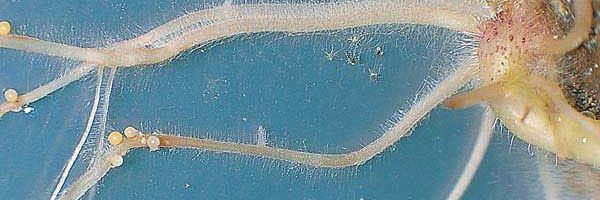
Globodera spp.
(Potato cyst nematodes)
- Causal agent and transmission
Potato cyst nematodes (PCN) are sedentary endoparasites that have a survival stage, the cyst, being able to survive in the soil for many years (up to 10 or even 20 years, depending on the climate) and this is obviously an efficient means of dispersal.
Adult forms are visible to the naked eye in the form of small balls becoming brown (cysts) (0.5 to 0.9 mm) attached to the plant roots. The colour of these cysts is initially pale yellow, then golden yellow in the case of Globodera rostochiensis, and white for G. pallida before turning brown.
Though none of the life stages in either species are naturally motile (except the male), cysts are very easily transported by any soil movement on farm tools, tractor wheels and by any other items likely to carry soil: e.g. boots, runoff water etc. and any plant organs used for planting (tuber, bulb, corm).
These nematodes complete one life cycle synchronised with the potato growing cycle, with a very high multiplication rate of 1: 400-500.
- Significance
Both species of the potato cyst nematodes are present in most potato production areas where they are considered as major potato pests. Because eradication is impossible, their quarantine status and mandatory control measures, such as soil testing especially reinforced on seed material, help to maintain cyst nematode-free areas for as long as possible.





